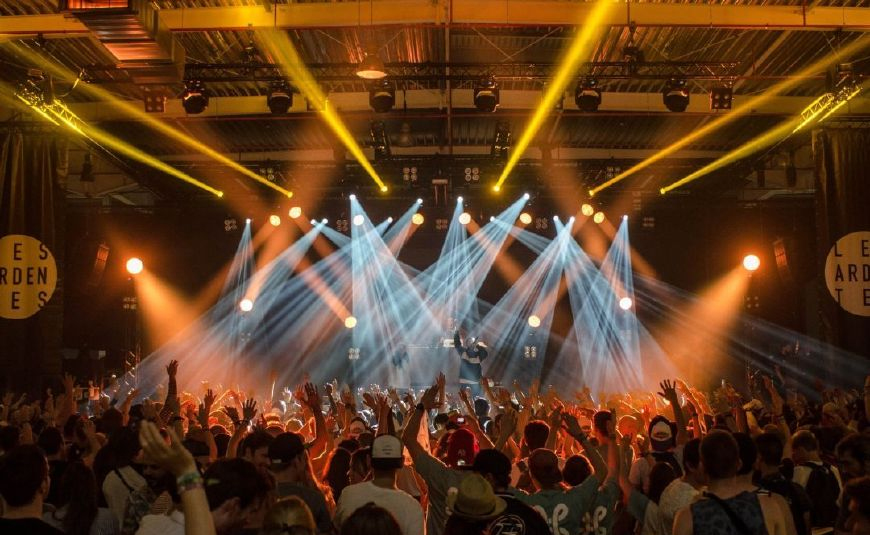What is the difference between TV lighting and stage lighting?
- Categories:Technical Support
- Author:
- Origin:
- Time of issue:2019-10-31 13:58
- Views:
(Summary description)The stage lighting design profession is the traditional specialty of the drama academy. Many of its graduates will enter the major theatre groups of the professional counterparts
What is the difference between TV lighting and stage lighting?
(Summary description)The stage lighting design profession is the traditional specialty of the drama academy. Many of its graduates will enter the major theatre groups of the professional counterparts
- Categories:Technical Support
- Author:
- Origin:
- Time of issue:2019-10-31 13:58
- Views:
The stage lighting design profession is the traditional specialty of the drama academy. Many of its graduates will enter the major theatre groups of the professional counterparts, and some will enter the television station. After entering the TV station, the latter class of students must experience the process of re-exploring learning in the field of television lighting. This article intends to do some discussion on the differences between TV lighting design and stage lighting design. I hope that I can help the peers who are studying lighting design in the drama school, and also inspire those who are interested in moving from the theater stage to the TV station. The stage art of drama is a comprehensive category of techniques and art covering screenwriters, directors, stage, lighting, costumes, sounds, etc. The stage lighting design is mainly for the lighting design of theatrical stage performances. TV art is a comprehensive art category that integrates the technology and art of director, stage, lighting, sound, clothing, editing, videography, etc. The TV lighting design is mainly for the stage performance of large-scale studios, studio recordings and Lighting design for outdoor program recording.
The audience facing the stage lighting design is the live audience during the theatrical performance; the audience corresponding to the TV lighting design is not only the audience, but also the audience in front of the TV. Even some TV programs have no audience at the scene. The recording of the program is only for the audience. TV broadcast service. This is a very important difference. Therefore, as a TV lighting designer, in many cases, not only the audience on the spot, but also the effect of the TV screen after the broadcast.
The stage lighting is mainly reflected in the human eye; the TV lighting is more important through the TV screen. For TV lighting, the camera is an important device. The stage of the drama is based on the human eye, and the video of the TV is a camera frame. This is a different perspective. The stage performance is the human eye feeling the stage, the personal perspective is *; while the TV program is recorded, the camera is watching the stage, the camera is multiple positions, multiple perspectives. The TV picture is taken by the camera. Here, the camera and the cameraman reflect the light, and then edit and edit the multiple angles of the picture through the director, and the TV signal is transmitted to the audience. This is a big difference between the stage performance and the TV screen. The many differences mentioned in this article are often some of the characteristics that TV lighting highlights to meet the camera requirements of the camera.
2 Characteristics of TV lighting and stage lighting
2.1 illumination requirements
The visual range of the human eye is relatively large, that is, the range of brightness that can be felt is relatively large. Whether it is sunny or the moonlight is dim, the human eye can clear the object and distinguish the details through the free adjustment of the pupil. For the stage lighting that the human eye is watching, the brightness of the stage and the scene can be as long as the viewer is comfortable.
The camera is adapted to the light and dark changes by adjusting the lens aperture and the sensitivity of the internal CCD sensor. When the studio illumination is low, the camera can open a large aperture, and when the illumination is high, a small aperture can be opened. However, the size of the aperture affects the effect and quality of the image, such as the depth and depth of the depth of field, the sharpness of the image, and so on. When the camera aperture is opened to *, the halo will be more obvious; if the camera aperture is too small, the diffraction will reduce the sharpness of the image. Therefore, as a TV lighting designer, it is necessary to maintain a relatively appropriate illumination at the scene of the program recording, so that the camera can determine a suitable aperture opening to ensure the quality of the picture. It is impossible to illuminate too small, forcing the camera to open to * aperture; nor can it be too irritating, forcing the camera to open to a small aperture, which will affect the effect of the TV picture. At the same time, it should be noted that the sensitivity of different cameras is different, and the requirements for contrast are also different. The illumination of the studio light is to ensure that the camera can be adjusted to the appropriate aperture for a clear picture.
2.2 Light ratio requirements
The light ratio refers to the ratio of the brightness between the light and the dark formed by the light projected on the scene. Different light ratios can be applied to the scene, which can present different artistic effects. The light ratio is large, the contrast is strong, and the visual impact is large; Small, soft contrast, can make people feel a kind of soothing. The stage lighting is rich in the use of light ratio, and it is free to do as long as it satisfies the viewer's vision. Many of the strong dramatic effects are achieved by the big contrast of the big and the dark. TV lighting is not the case, the camera's allowable * contrast is limited. In the TV lighting, the illuminance can be compensated by adjusting the aperture of the camera within a certain range, but the light ratio of the illuminated object is not adjustable by the camera. It should be said that the light ratio is relatively objective, and the camera is not. The method adjusts the light ratio of the illuminated object from 2:1 to 3:1. If the light ratio of the illuminated object is too large, beyond the allowable range of the camera, at this time, if the camera adjusts the aperture with the bright part of the illuminated object as the standard, the details of the bright part are reflected, then the dark part may be blackened into a ball; If the camera adjusts the aperture with the dark part as the standard, the dark part can reflect the level, but the bright part may be exposed to white. These are all unsatisfactory picture effects that are not available to the choreographer.

Scan the QR code to read on your phone


Scan the phone
Tel:020-86423739 / 13076897059 (WeChat same number) Email :qse001@qianselight.com ADD: Building 3, No. 7, Orchid Street, Dagang, Shijing Town, Baiyun District, Guangzhou
Copyright © 2019 Guangzhou Qianse Stage Lighting Factory (QSE) CO.,LTD All Rights Reserved. 粤ICP备13036493号 by : www.300.cn













